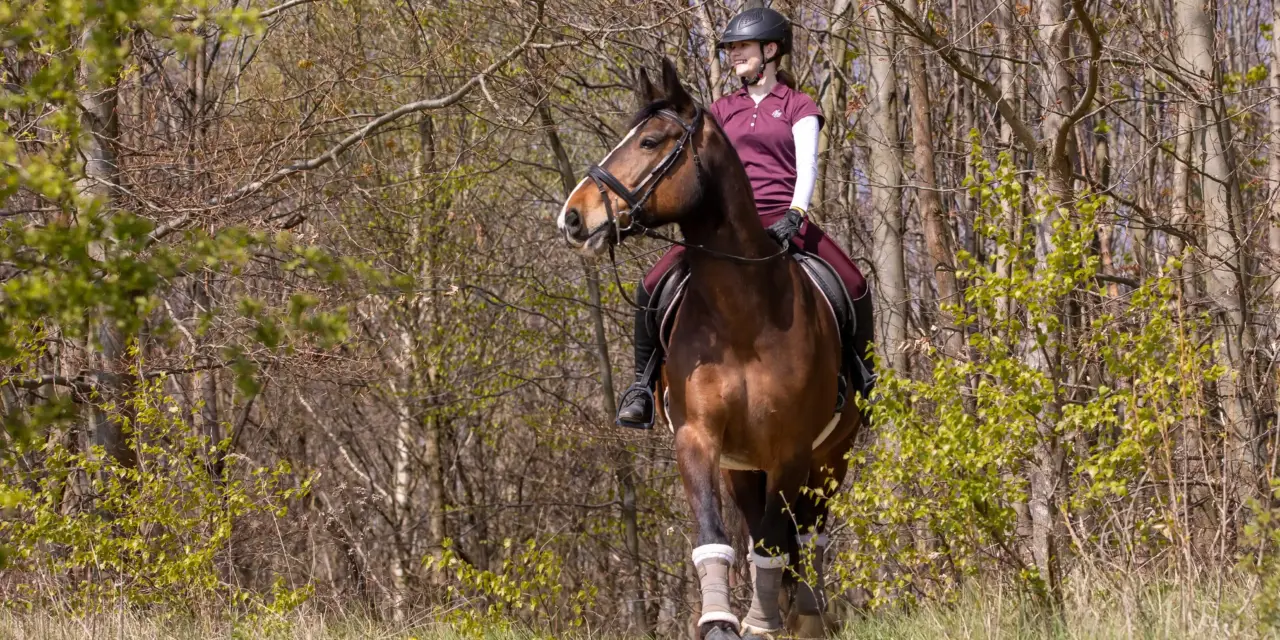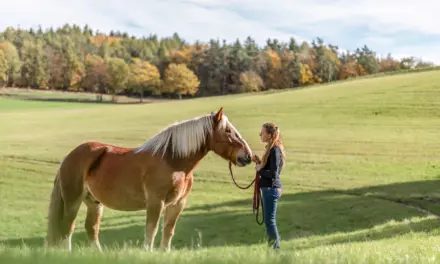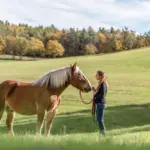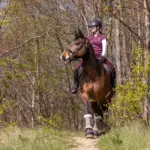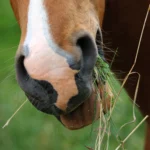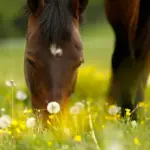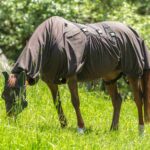How hacking out boosts performance and supports mental well-being
Key Points at a Glance
- Hacking out is an underrated part of a sport horse’s training plan – yet it offers enormous benefits
- Gentle warm-ups while hacking out prepare muscles and joints perfectly for schooling, dressage or jumping
- Variety keeps the horse mentally fresh and ensures training stays enjoyable and engaging.
- Working in natural environments with varied demands supports all-round fitness and conditioning
- The right gear and thorough preparation are key to staying safe when hacking out
- Regular weekly hacking improves a horse’s performance and promotes mental balance
The overlooked potential in training
Many sport horses spend the majority of their training time in indoor arenas or on schooling surfaces. Dressage horses work on movements every day, while show jumpers tackle course after course. Yet one key element for peak performance is often overlooked: training out in natural surroundings.
Hacking out offers a level of training quality that artificial riding arenas can never fully replicate. Uneven ground, natural inclines and varied surfaces challenge the horse in ways that simply can’t be simulated in an indoor school. This variety of stimuli plays a vital role in developing a well-balanced, athletic sport horse. Studies show that horses who train regularly outdoors develop better proprioception, stronger joints and more balanced muscle tone. These are the foundations for top performance in all disciplines – from dressage to show jumping to vaulting.
A different kind of warm-up: gentle hills instead of dressage arenas
Warming up before intensive training sessions or competitions can be transformed through hacking out. Instead of monotonous walk and trot circles in the arena, gentle inclines and varied tracks offer a far more effective way to prepare the muscles. Walking uphill activates the hindquarters more thoroughly than any indoor work. Horses are encouraged to step under, engage the hindlegs, and develop carrying power – all essential elements for later performance. At the same time, they stay relaxed and mentally fresh.
Free walking on a long rein over varied terrain loosens the entire musculature and boosts circulation. The natural unevenness of the ground gently activates the deep muscles and strengthens the stabilising core structures that are often neglected during indoor schooling. Most horses find the transition from a relaxed hack to focused arena work far easier than going straight from the stable into a training session. Physically, they are well prepared – and mentally still fresh and receptive for the tasks ahead.
Mental refreshment through a change of scenery
The mental well-being of sport horses is often underestimated, yet it’s just as important as physical fitness. Daily arena work with high demands can lead to mental fatigue – and in some cases even to training resistance. Sadly, there are far too many examples of horses being retired from sport because they have become sour from overwork. Hacking out provides a vital balance and much-needed mental relief.
A change of scenery works like a mental reset. Instead of staring at the same four walls, horses are exposed to a world full of new impressions. Different landscapes, changing light conditions and natural sounds positively stimulate the senses and help prevent boredom. Many horses show noticeably improved willingness to work in the arena after a hack. They appear more balanced, attentive and motivated. This mental freshness directly translates into better performance, as relaxed horses are more willing to learn and respond more sensitively to the aids. Time away from the structured routine of arena work also gives horses the chance to express some of their natural behaviours. Exploring their surroundings, reacting to different environmental stimuli and moving more freely all contribute to their psychological well-being.
Functional benefits for the equine athlete
From a biomechanical perspective, training out in the countryside offers invaluable benefits for sport horses. The natural movement patterns required when hacking out perfectly complement specialised schooling and promote more balanced physical development. Different types of footing help train proprioception – the horse’s sense of body awareness. Soft grass, hard tarmac, slippery muddy puddles or stony tracks all require different movement adjustments. This constant adaptation refines the nervous system’s response and significantly improves coordination.
The varying strain on the joints is another key factor. While arena work usually involves uniform movements on flat ground, hacking out places constantly changing demands on the joints. This supports joint health and helps prevent uneven loading and premature joint wear.
Uphill and downhill work trains different muscle groups more intensively than arena exercises. Walking uphill strengthens the hindquarters, while walking downhill engages the back and abdominal muscles. This natural variety promotes more harmonious muscle development. Steep uphill walking in walk improves the hindquarters’ ability to carry weight more effectively than any piaffe training.
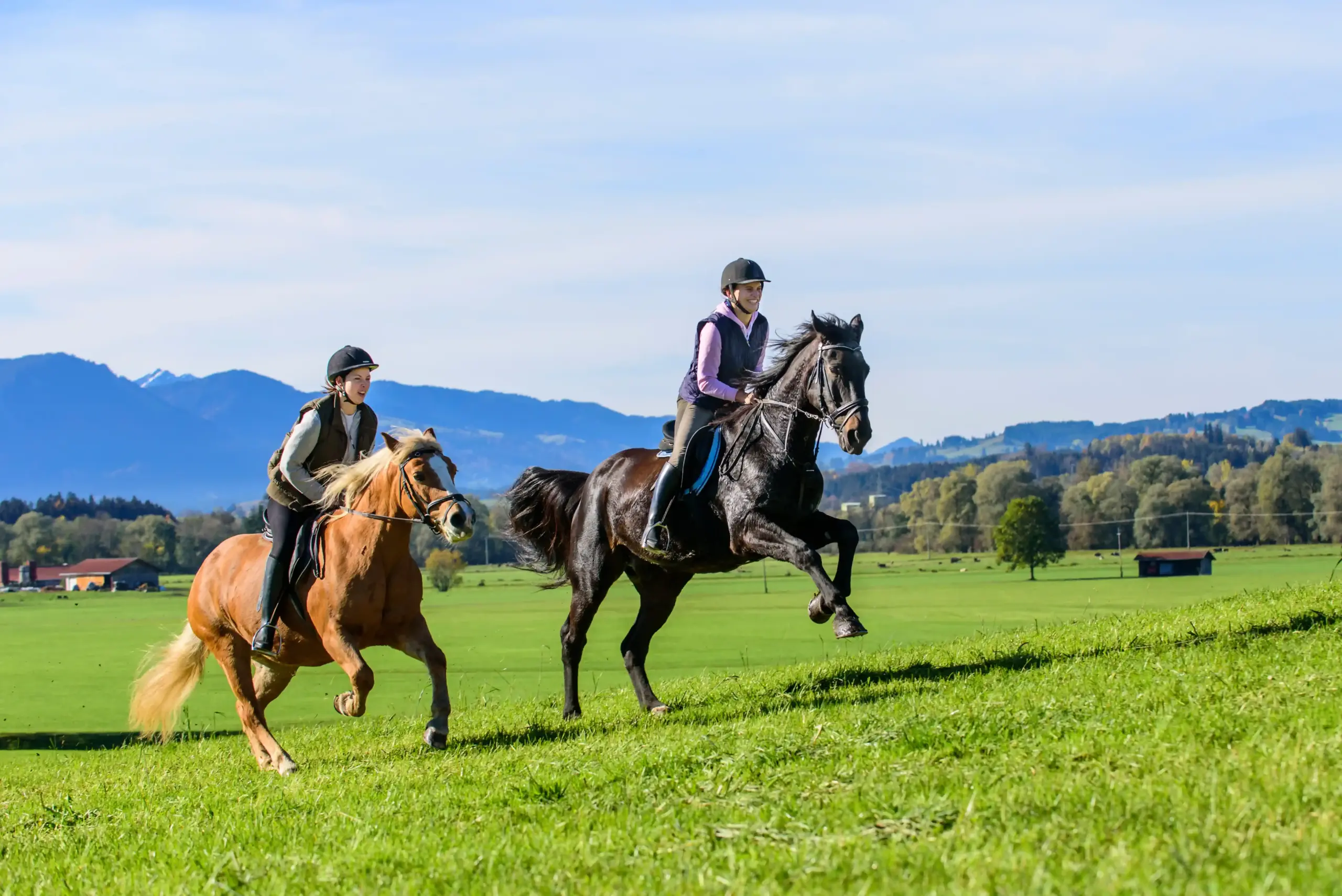
Staying safe: how to minimise the risks
Despite all its benefits, training sport horses out in the countryside does carry certain risks – but these can and should be minimised through careful planning and preparation. Investing in a valuable sport horse fully justifies taking extra safety precautions.
A horse’s sure-footedness should be developed gradually. A dressage horse that’s only ever worked on flat arena surfaces can’t be expected to navigate difficult terrain safely straight away – especially if it’s shod. Shoes reduce the sensitivity of the hooves, making it harder for the horse to assess the ground beneath them. Sure-footedness should be built up gradually, progressing from easy to more challenging routes. To begin with, it’s best to stick to well-maintained tracks between fields and meadows or forest paths.
Even here, the natural unevenness between the lower-lying tyre tracks and the slightly raised, grass-covered centre can be a challenge. Hollows left by puddles and stones on the track need to be navigated carefully. The more confident the horse becomes on these tracks, the sooner you can venture onto narrower paths – those covered in slippery leaves or with the occasional branch or fallen log to step over. Many sport horses benefit from being taken for walks in hand at first. This allows them to get used to different types of footing without having to balance the rider at the same time.
Equipment deserves special attention. Brushing boots help protect the legs from injuries caused by branches or stones on those first outings. When leading the horse, a well-fitting rope halter or cavesson offers better control than a head collar if the horse becomes unsettled. When riding, it’s best to stick with the bit the horse is used to. Switching—often out of fear that the horse might bolt—from a familiar loose-ring snaffle to a harsh curb bit can result in a painful experience, leading the horse to develop negative associations with hacking out. It’s often better to gradually familiarise the horse with hacking out by walking in hand or riding in a group of calm, sure-footed horses, using the bit it already knows. Very few horses will bolt from the safety of the herd if they’re startled.
Emergency preparedness is another often-overlooked aspect. A basic first-aid kit, a mobile phone, and knowledge of the local area can be crucial in case of an incident. Riding with company – or at the very least letting someone know your planned route – also adds an extra layer of safety.
Step-by-step integration into the training plan
Hacking out shouldn’t be random or occasional – it should be intentionally built into the training plan. A weekly routine delivers the best results and is more readily accepted by the horse as a regular part of its work. How often it’s included depends on the overall intensity of the training schedule. Horses in intense competition preparation benefit from two to three relaxed hacking sessions per week. During quieter periods, such as the winter off-season, longer hacks or more challenging countryside routes can be added to the plan.
Setting goals is just as important in hacking out as it is in arena training. One session might focus on warming up, another on relaxation or building stamina. Depending on the objective, pace, duration and level of difficulty can be adjusted accordingly. Keeping a record of hacking sessions helps track progress and optimise the overall training. Notes on the horse’s reactions, any incidents or noticeable improvements can provide valuable insights for future planning.
The key to sustainable performance
Hacking out is far more than just variety or relaxation for sport horses. It’s an essential component for long-term performance and health. The combination of physical benefits and mental relaxation not only makes horses more capable but also helps them enjoy longer, more sustainable careers in sport.
Investing in regular hacking out pays off through improved performance, fewer injuries, and more balanced horses. Sport horses that are familiar with and enjoy working outdoors are more versatile and maintain their enthusiasm for work over the long term. Modern training means making use of all available resources – and the countryside offers a quality of training that no arena can match. Anyone aiming to bring out the best in their sport horse cannot afford to overlook the value of hacking out.
- Calmness starts before leaving the yard: preparing your horse for stress-free hacks - 8. July 2025
- Out of the arena: Why sport horses need to hack out - 8. July 2025
- Assessing the correct body condition in horses - 21. June 2025

